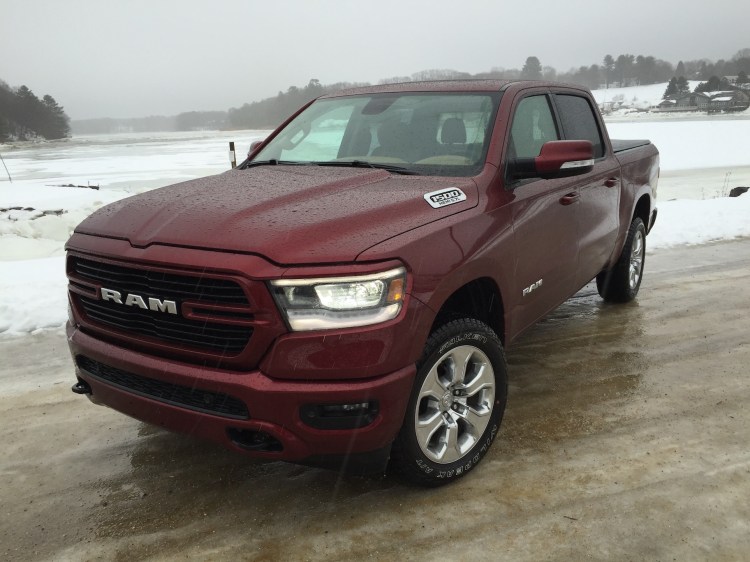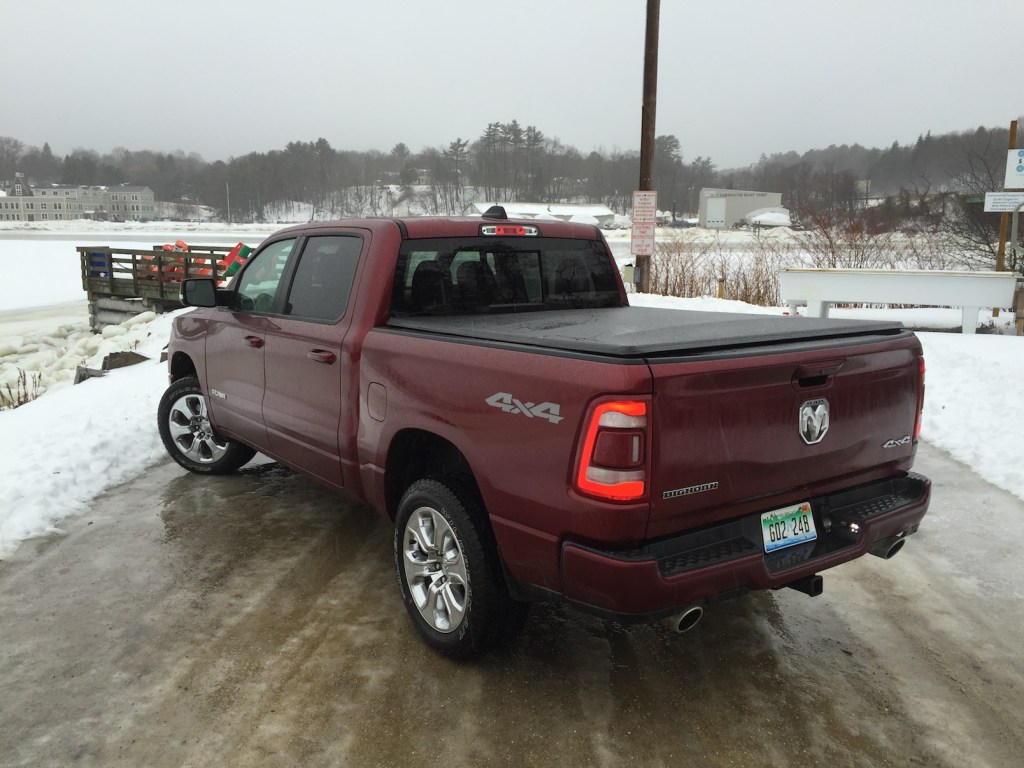Horace and John Dodge did not live long, but the car company that bears their name has been around since 1914 and developed a loyal following.
Despite current Dodge owner Fiat/Chrysler/Automobiles-FCA deciding to separate pickup trucks and commercial work vehicles from the Dodge brand in 2009, the resulting Ram brand has proven vitally important to the corporation’s overall success.
In 1936 – 15 years after the first Dodge one-and-a-half-ton and two-ton pickups debuted – Dodge started employing a ram head symbol on many of its products. By 1963, when Dodge created its first crew-cab pickup truck ( a novelty vehicle meant for construction crews and the military only) who knew that four-door pickups would someday rule the whole class, and that many of them would proudly carry a Ram symbol and badge against the more established Ford and Chevy trucks?
A few months back, we introduced you to the 2019 Ram North Edition Crew Cab, (starting at $41,895) a special trim level based on the Big Horn model. North trucks carry larger 20-inch wheels shod with unique Falken M&S tires, a locking rear axle, a chassis raised one inch for greater ground clearance, electric-shift 4WD with an auto-mode AWD function, plus an assortment of interior mods and pieces meant to better aid winter, or “north” customers. This includes heavy-duty rubber floor mats, heated cloth seats, remote starting, plus a heated steering wheel.
After three mornings of zero-degree or colder starts, the Ram’s heated seats (heated cloth is way better than heated leather) and steering wheel proved priceless. Once you have experienced it, and the remote starting, you won’t want to drive a vehicle in winter without these pieces.
Powered by a conventional 5.7-liter Hemi V-8 (a 48-volt E-assist mild hybrid Hemi is available, as well as the base 3.6-liter V-6) the Ram North Edition proved to be a significant truck. It is quieter than its rivals at all road speeds, provides class-leading ride attributes, and the interior’s space and comfort reveal the leaps and bounds the pickup industry has made over previous generations of work-first trucks – which can’t match today’s trucks in refinement, tactile feel, noise/vibration/harshness control, and overall presentation. The Ram excels in each of these areas.
Doubter? Try five input jacks for the audio system, plus a single-slot CD player for diehards. Sample the apps on the 8-inch U-connect screen – which now seems tiny next to the new 12-inch screen on Laramie and Limited trims– plus the 7-inch TFT center dash instrument panel. Conventional buttons and knobs are large-finger friendly, offer appropriate feel and feedback and work superbly.
Even the rotary shifter, a control not without its own controversy, but one that is easily adaptable, too, is now distinct from other rotary controls and is not accidentally employed when not intended.
From the huge console, with a sliding inside drawer, to the dual glove boxes (oh, that’s where the registration is, officer) to the underfloor cargo bins under the flat rear floor in front of the limousine-like rear seating, the Ram is an impressive combination of useful, subtle, and functional amenities.
Other pros: Who wouldn’t appreciate low-speed turning lamps that help illuminate around corners? Who imagined that they needed puddle lamps on the bottom of their mirrors, or a 360-degree rear view camera with parking assist sensors?
Gripes are nit-picky. The aerodynamics around the larger tow mirrors on our well-optioned ($56,935) North Edition created pools of rain and road-crud residue on the side glass in front of the mirror view. The large, chromed, hood-mounted Hemi badges seem gratuitous, almost glaring symbols that should be better integrated into the Ram’s otherwise handsome styling. More discreet badges, perhaps similar to the Hellcat’s angry cat head, would seem more appropriate.
And the Ram’s on-road competence and comfort allowed this big truck to cruise effortlessly and often too quickly. After 1,400 miles and more than 30-hours behind the wheel, it was a pleasure to pilot this truck, whose fuel tank delivered an honest 17 mpg against an EPA rating of 15/21/17 mpg.
Pickup trucks have evolved. They are no longer reserved for tradesmen, contractors, or ranchers. Solid axle front ends are gone; steering feel, braking feel now rivals some of the best luxury cars. Today’s pickups are much more than just another tool for work.
And that is the gist of their success. Our American-designed pickups reflect our preference for not just larger vehicles, but also for multi-tasking vehicles that are comfortable, competent. With levels of safety, luxury, and refinement unimagined for three-ton brutes, the new pickups have displaced many prominent brands in consumers’ driveways.
And yes, today’s trucks can work, too.
Perhaps Ram trucks have evolved the most, at least far beyond what John and Horace Dodge could have dreamed. With GM and its new trucks playing hide-and- seek with the media – making it difficult to discern how good, or not, they are – the current Ram pickup series climbs to the top of the class.
Send questions/comments to the editors.





Success. Please wait for the page to reload. If the page does not reload within 5 seconds, please refresh the page.
Enter your email and password to access comments.
Hi, to comment on stories you must . This profile is in addition to your subscription and website login.
Already have a commenting profile? .
Invalid username/password.
Please check your email to confirm and complete your registration.
Only subscribers are eligible to post comments. Please subscribe or login first for digital access. Here’s why.
Use the form below to reset your password. When you've submitted your account email, we will send an email with a reset code.